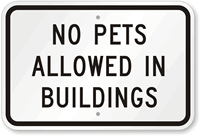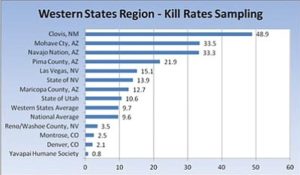Sadly, one of the biggest challenges a community faces in achieving “No-Kill” comes from landlords who refuse pets despite hearing from their own colleagues and professional journals that permitting pets makes good business sense. In fact, a survey conducted by The Foundation for Interdisciplinary Research and Education Promoting Animal Welfare found:
• Fifty percent of all rentals nationally prohibit pets;
• Thirty-five percent of tenants without pets would own a pet if permitted;
• Tenants in pet-friendly housing stay an average of 46 months compared to 18 months in rentals prohibiting pets;
• The vacancy rate for pet-friendly housing is lower (10 percent) than “no pets allowed” rentals (14 percent); and
• Twenty-five percent of applicants inquiring about rentals in non-pet-friendly housing are seeking pet-friendly rentals.
With such a sizable potential tenant pool it seems there should be enough pet-friendly housing to meet demand. According to economic theory, in perfectly functioning markets (where people make rational, profit-maximizing decisions, with full information and no significant transaction costs) pet-friendly housing should always be available to renters willing to pay a premium to cover any extra costs to landlords.
Why then do so many landlords overlook opportunities to increase profits by providing pet-friendly housing? With nearly 70 percent of American households having companion animals and over half of renters who do not have a pet wanting one, why are so few pet-friendly rental units available?
The report found that among landlords who do not allow pets, damage was the greatest concern (64.7 percent), followed by noise (52.9 percent), complaints/tenant conflicts (41.2 percent) and insurance issues (41.2 percent). Concerns about people leaving their pet or not cleaning common areas were rarely cited (5.9 percent).
Although 85 percent of landlords permitting pets reported pet-related damage at some time, the worst damage averaged only $430. This is less than the typical rent or pet deposit. In most cases, landlords could simply subtract the damage from a pet deposit and experience no real loss. In fact, the report finds landlords experience no substantive loss. There is little, if any, difference in damage between tenants with and without pets.
Other pet-related issues (e.g., noise, tenant conflicts concerning animals or common area upkeep) required slightly less than one hour per year of landlord time. This is less time than landlords spend for child-related problems and other issues. Whatever time landlords spend addressing pet-related problems is offset by spending less marketing time on pet-friendly units by a margin of 8 hours per unit.
The study found problems arising from allowing pets to be minimal; and benefits outweigh the problems. Landlords stand to profit from allowing pets because, on average, tenants with pets are willing and able to pay more for the ability to live with their pets.
Many municipal shelters receive many wonderful pets because of this unnecessary housing shortage. Imagine if all landlords permitted pets. That would create a demand far greater than the number of pets dying in our shelters, allowing our community to maintain its status among the safest communities in the United States for pets.
Unfortunately, too many landlords overlook the opportunity to increase revenue, tenant pools and market size by allowing pets. While the benefits to landlords are easily quantified in a profit/loss statement, the benefit to our community’s homeless pets is incalculable. Landlords can make a profitable, life-saving choice by simply permitting pets.

